Do deer eat petunias? Ever felt like you’re hosting a deer dinner party without sending out any invites? If so, you’re not alone. Many gardeners find themselves unwittingly setting a feast for these graceful grazers, especially when petunias are on the menu.
As beautiful as these creatures are, their fondness for our flowers can be a gardener’s nightmare. This guide delves into the deer-petunia relationship and offers effective methods to ensure your flowers not only survive but thrive.
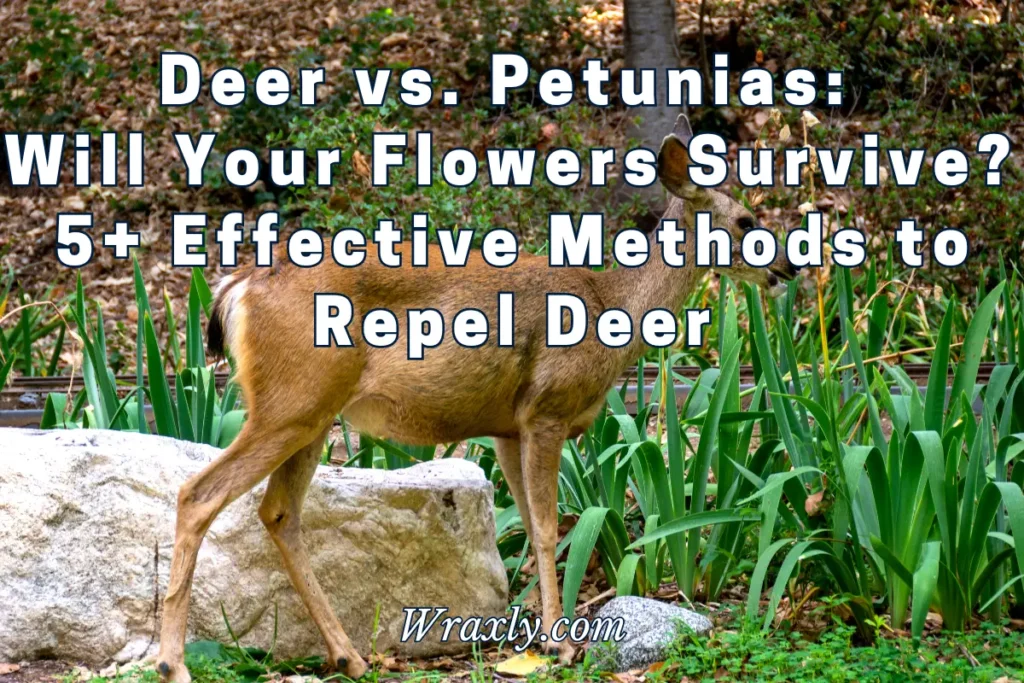
Effective Methods to Repel Deer
As enchanting as deer might be when spotted in the wild, their presence in gardens can be a significant concern for many homeowners and gardening enthusiasts. Their penchant for nibbling on plants, especially favorites like petunias, can wreak havoc.
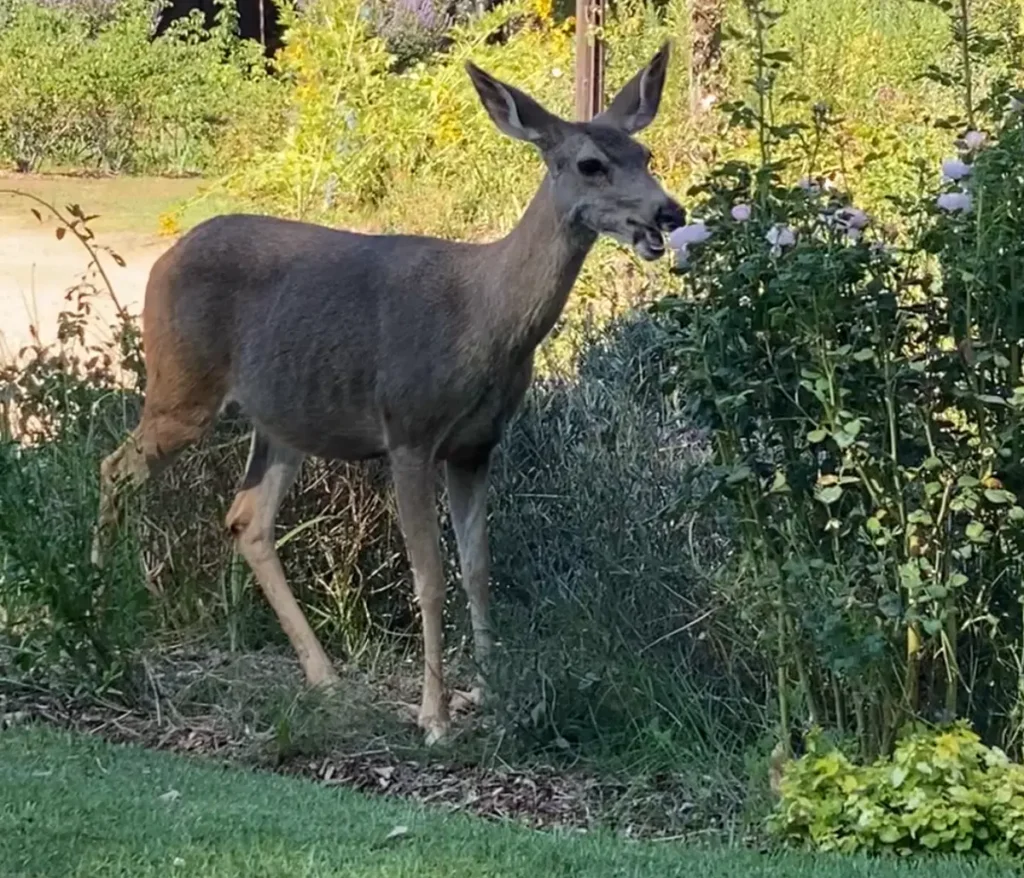
Fortunately, there are several effective methods to deter these graceful grazers from turning your garden into their personal buffet.
Physical Barriers to Prevent Deer Eating Petunias
- Fencing: One of the most effective ways to keep deer out is fencing. However, deer are excellent jumpers. A height of at least 8 feet is recommended to prevent them from leaping over. There are various types of fencing, from wooden and metal fences to mesh and plastic options. While solid fences can be more aesthetically pleasing, they are often more expensive. On the other hand, mesh or deer netting is less obtrusive and more cost-effective but might require more maintenance.
- Netting: Netting, especially when draped over individual plants or beds, can deter deer. The advantage is that it’s relatively inexpensive and can be easily installed. However, it might not be the most visually appealing solution, and there’s a risk of birds or small animals getting entangled if not properly maintained.
- Electric Fences: These are fences that give a mild shock to deter deer. They’re effective, especially when baited with peanut butter or other attractants. However, they should be used with caution, ensuring they’re clearly marked to prevent accidental contact by humans or pets.
Natural Repellents
- Homemade Sprays: A popular and eco-friendly method involves making repellent sprays at home. A common recipe includes water, garlic, hot pepper, and eggs. The strong odors deter deer, and the egg adds a sticky element that helps the mixture adhere to plants. To make, blend a few cloves of garlic, a couple of hot peppers, and an egg with water, then strain and spray on plants.
- Commercially Available Repellents: There are numerous deer repellents available in the market. When choosing one, look for those that are environmentally friendly and have positive reviews regarding effectiveness. It’s also beneficial if they’re long-lasting and rain-resistant.
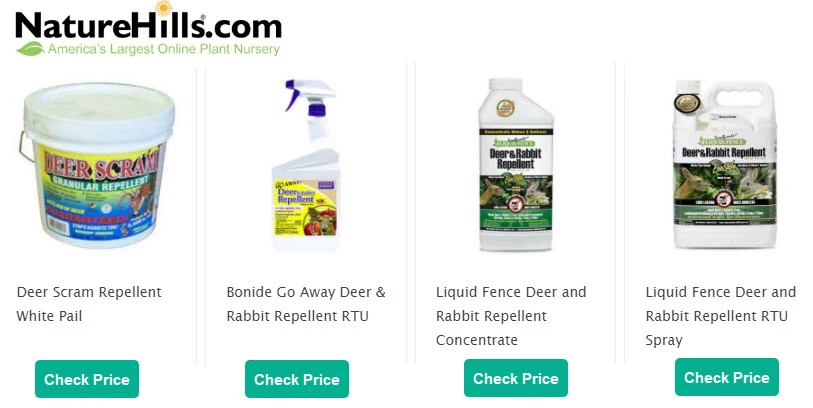
Plant Choices to Repel Deer from Eating Petunias
- Companion Planting: Some plants naturally repel deer due to their scent or taste. Incorporating them into your garden can deter deer. Examples include lavender, rosemary, and sage.
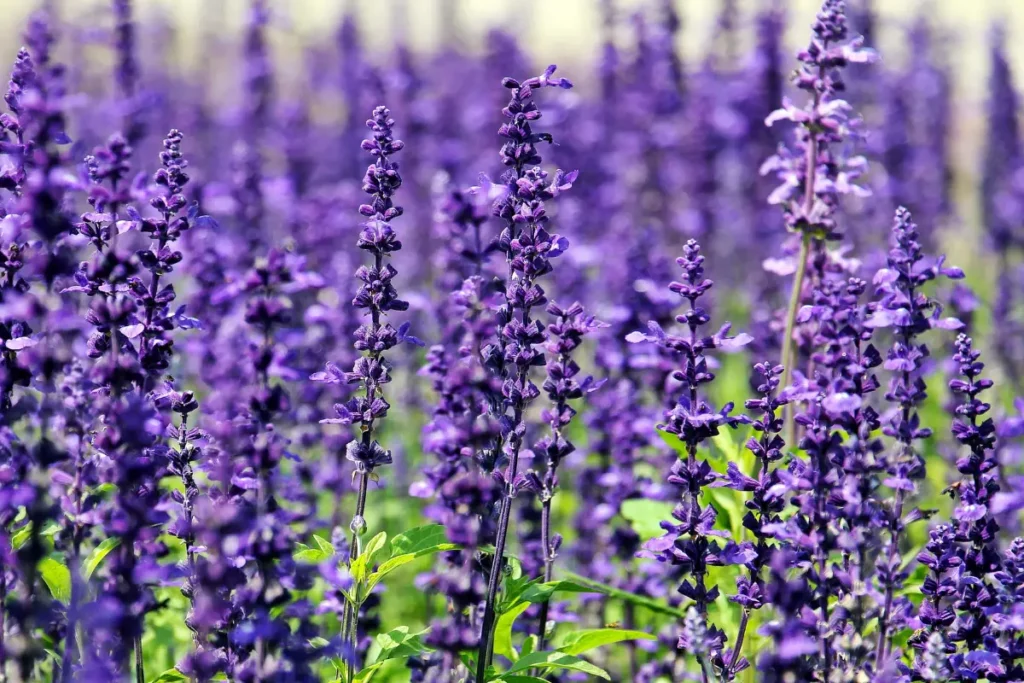
- Alternative Flowers: If deer are particularly fond of certain plants in your garden, consider replacing them with less appealing options. For instance, instead of petunias, you might opt for snapdragons or marigolds, which are less palatable to deer. See: Deer Resistant Plants
Scare Tactics
- Motion-activated Sprinklers: These devices detect movement and release a burst of water, startling deer and other animals. They’re effective and also provide the added benefit of watering your garden.
- Noise Deterrents: Radios left on talk stations can deter deer, as they’re wary of human voices. Ultrasonic repellents, which emit high-frequency sounds inaudible to humans but disturbing to deer, can also be effective.
- Visual Deterrents: Reflective objects, like aluminum foil or CDs, can scare deer away when they move or catch the light. Scarecrows, especially those that are motion-activated or change position regularly, can also be effective.
Recommended Ultrasonic Deer Repellants
| Image | Title | Prime | Buy |
|---|---|---|---|
 | Abilly 2023 Solar Ultrasonic in Repellent Defender Rat, Squirrel, Deer, Raccoon, Skunk, Rabbit, Mole, Dog, Cat, Waterproof with Motion Detector Green | PrimeEligible | Check My Price on Amazon |
Top | Careland Ultrasonic Deer Repellent Solar Animal Repeller Outdoor Cat Repellent Motion Activated with LED Flashing Light,Keep Animals Deer Raccoon Foxes Dogs Away from Lawn and Garden | PrimeEligible | Check My Price on Amazon |
 | Ultrasonic Solar Animal Repeller,360°Solar Pest Animal Repellent,Cat Repellent Outdoor,Motion Sensor & Flashing Light,Coyote Deterrent,Repel Dogs,Deer,Fox,Raccoon,Skunk,Rabbit,Squirrels,Birds | PrimeEligible | Check My Price on Amazon |
 | 2 Pack Ultrasonic Animal Repellent Outdoor,Solar Animal Repeller with Motion Sensor Flashing Light Waterproof Animal Deterrent Devices for Deer Raccoon Cat Squirrel Skunk Dog Rabbit Coyote | PrimeEligible | Check My Price on Amazon |
 | Redeo Solar Nocturnal Animal Repeller Predator Control Light Coyote Repellent Devices Waterproof Fox Raccoon Skunk Deer Deterrent with Red LED Lights for Garden Farm Chicken Coop | PrimeEligible | Check My Price on Amazon |
 | 4 Pcs Solar Ultrasonic Animal Repellent Outdoor Waterproof Animal Deterrent Devices with Motion Sensor & 5 Strobe Lights & Explosive Flash Light & Speaker for Stray Cat Deer Dog Rabbit Raccoon Coyote | PrimeEligible | Check My Price on Amazon |
Odor Deterrents
- Soap Bars: Hanging soap bars from trees or stakes can deter deer due to their strong scent. It’s best to use heavily fragranced soaps for maximum effectiveness.
- Human Hair: Collecting hair from your hairbrush and scattering it around the garden can deter deer, as they associate the scent with humans and potential danger.
- Predator Urine: Products containing the urine of predators, like coyotes or foxes, can be effective in repelling deer. The scent signals danger, making deer think twice before entering the area.
Cultural Practices
- Timing of Planting: Planting at times when deer are less active or when alternative food sources are abundant can reduce the likelihood of your garden being targeted.
- Maintenance and Pruning Techniques: Regularly pruning and maintaining your garden can make it less attractive to deer. For instance, clearing away fallen fruits or nuts reduces the food available to them.
Understanding Deer’s Attraction to Petunias
Gardening enthusiasts and nature lovers alike often find themselves puzzled by the particular fondness deer have for certain plants. Among these, petunias seem to be a top favorite. But what is it about petunias that make them so irresistible to deer? Let’s delve into the science and sensory allure behind this attraction.
Nutritional Benefits for Deer
Deer, like all animals, are driven by their basic need for sustenance. Their diet primarily consists of a variety of plants, each offering specific nutritional benefits. Petunias, while ornamental for us, are a source of nutrition for deer.
These plants provide essential vitamins, minerals, and moisture that deer require for their daily metabolic functions. Petunias, being herbaceous annuals, are soft and easy for deer to digest. Their tender leaves and stems are particularly appealing to younger deer and fawns that might struggle with tougher foliage.
Moreover, during periods of drought or when food is scarce, the moisture content in petunias can be a lifesaver for deer, quenching their thirst and providing hydration.
The Sensory Appeal: Color and Scent
Beyond the nutritional aspect, there’s a sensory appeal to petunias that deer find hard to resist. Deer have dichromatic vision, which means they see in two-color spectrums (blue and yellow). Brightly colored petunias, especially those in shades of white, yellow, or blue, can stand out in the landscape, making them easy targets.
The scent of petunias also plays a significant role in attracting deer. While deer have a sense of smell that’s far more developed than humans, they use it to detect potential food sources from a distance. Petunias emit a pleasant fragrance, which, combined with their visual appeal, makes them almost irresistible to these creatures.
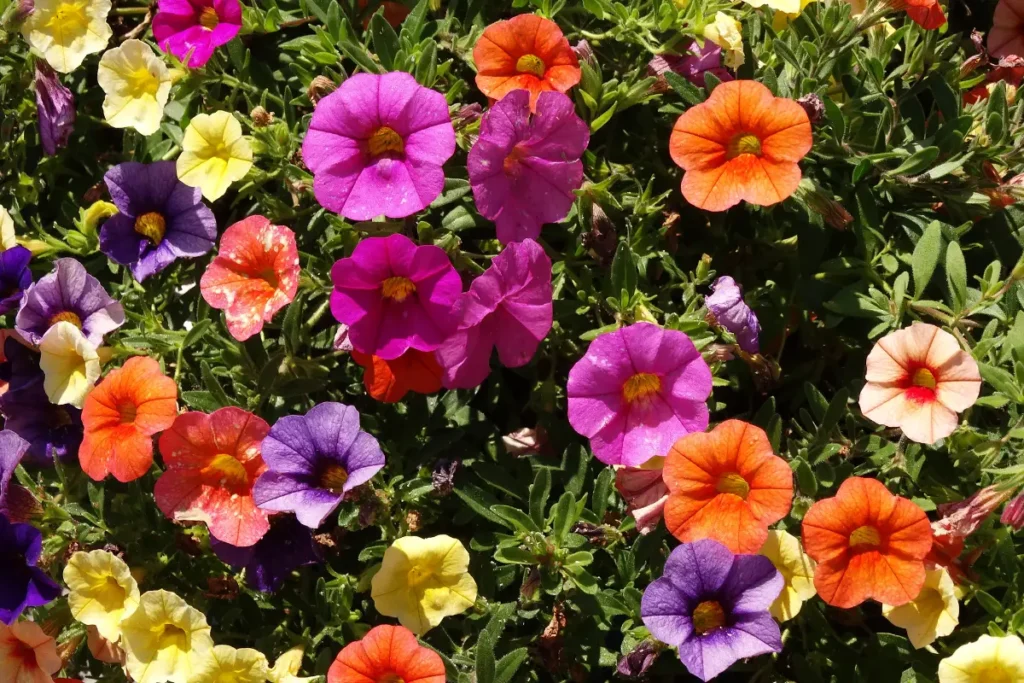
The Impact of Deer on Petunias
While the attraction is clear from the deer’s perspective, the aftermath of their visits can be devastating for gardeners. The impact on petunias is multifaceted, ranging from physical damage to potential disease spread.
Deer aren’t known for their delicate nature when foraging. As they move through gardens, they can inadvertently trample plants, breaking stems, and crushing foliage. But the real damage comes from their feeding habits.
Deer nibble on the tender parts of the petunias, often leaving behind a jagged or torn edge, which is a clear sign of deer damage as opposed to the clean cuts that might be left by other pests.
In their quest for the most nutritious parts of the plant, deer might also uproot petunias. They tug at the stems, which can result in the entire plant being pulled out, especially if the soil is loose or moist.
Potential for Disease Spread
Deer, while foraging, can become inadvertent carriers of diseases and pests. As they move from one garden or plant to another, they can transfer diseases like fungal spores or even pests like ticks. For instance, if a deer feeds on a plant infected with a particular fungus and then moves to nibble on a petunia, there’s a risk of that disease being transferred.
Moreover, the saliva of deer can also be a medium for disease transmission. When they nibble on plants, they introduce their saliva, which might contain pathogens harmful to plants.
From an aesthetic standpoint, a garden that’s frequented by deer can look ravaged. The beauty of a bed of petunias can be quickly diminished by the random patterns of consumption left behind by deer. Instead of a lush, full bed of flowers, gardeners might be left with sporadic growth, broken stems, and half-eaten flowers.
Final Thoughts on Do Deer Eat Petunias?
Navigating the world of gardening is akin to a beautiful dance, where sometimes, our partners (like deer) might step on our toes—or in this case, our petunias. But fear not, for every challenge in the garden, there’s a solution waiting to be unearthed.
So will your petunias survive against deer? Absolutely, with the right knowledge and tools! Among the myriad of methods we’ve discussed, fencing and natural repellents stand out as the top contenders in the battle against these four-legged flower fans.
So, as you venture forth, remember that with a sprinkle of persistence and a dash of creativity, your garden can be both a sanctuary for you and a no-dining zone for deer.
Happy gardening!

Darrell has a passion for gardening that he inherited from his father. Go here to read more about the influence his father played in his love for gardening. If you want to send Darrell a quick message, then visit his contact page here.

![How to Water Indoor Plants [Plant Care 101]](https://wraxly.com/wp-content/uploads/2021/03/How-to-Water-Indoor-Plants-Plant-Care-101-1200-1024x576.webp)

![Growing Plants from Cuttings [A Simple Guide]](https://wraxly.com/wp-content/uploads/2021/03/Growing-Plants-from-Cuttings-A-Simple-Guide-1200-1024x576.webp)
